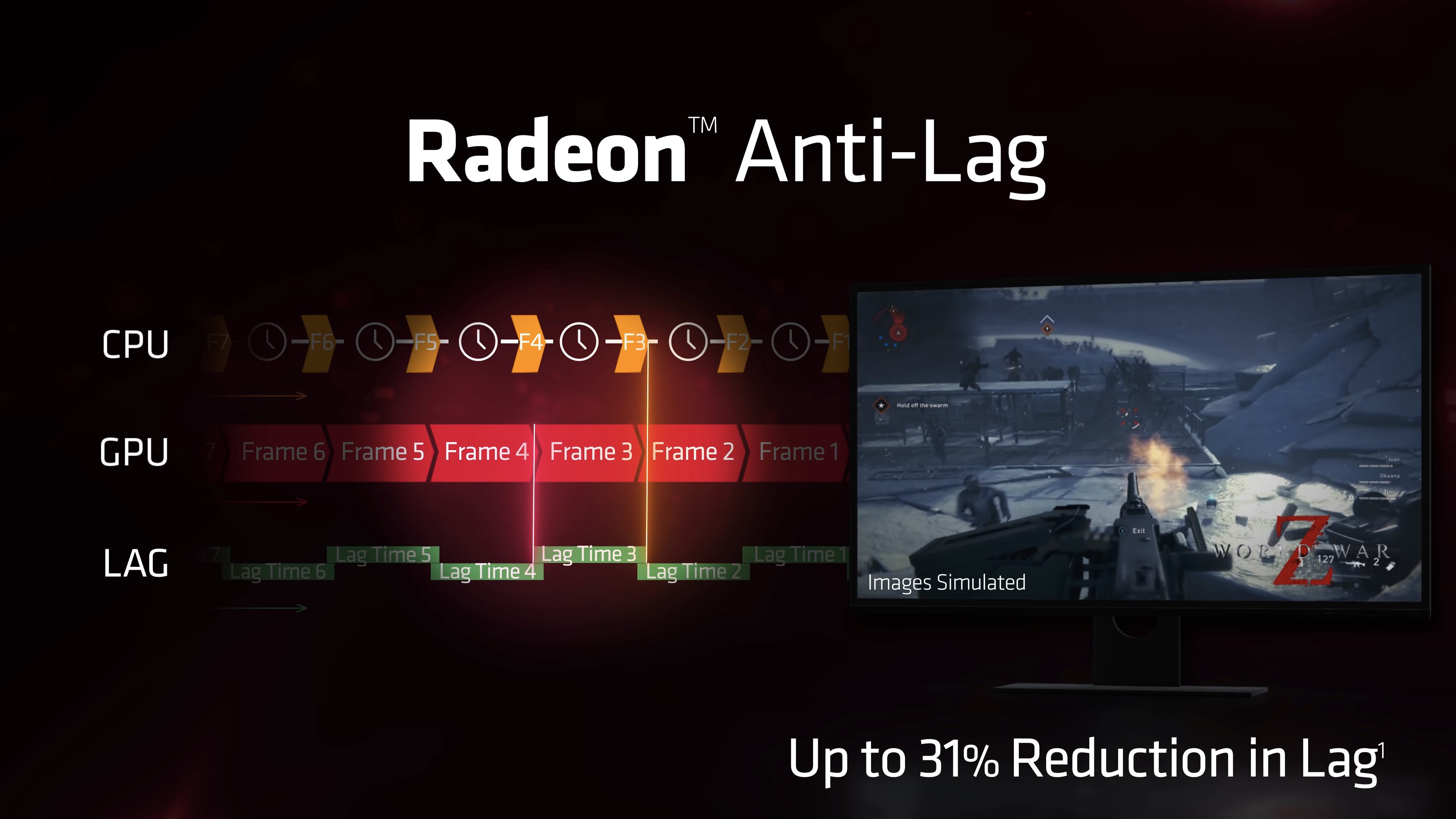
As of earlier today, a recent Vulkan spec update— version 1.3.291, to be specific— went live on GitHub, and besides miscellaneous fixes and the such, a new "VK_AMD_anti_lag" extension has been added to Vulkan, bringing full AMD Anti-Lag support outside the boundaries of the recent DirectX graphics APIs. Nvidia Reflex is also already supported with Vulkan in select titles, though some users have reported issues with that functionality under Vulkan. This update for adding Anti-Lag to Vulkan also addresses an existing "VK_NV_low_latency2" extension, as well.
For those unfamiliar with AMD Anti-Lag or Nvidia Reflex, the best way to think of these options when they are available in your game is "automated FPS capping." Traditionally, users may set FPS caps in games with unlocked FPS to stabilize visuals, performance, or GPU usage at a certain level without buffering frames (increasing latency) using V-Sync. In-engine FPS caps are almost always the best way to reduce input lag in a game, so long as that capped FPS target can be consistently met.
However, there are many caveats to FPS capping—namely, it's a very manual process, and it usually can't be easily adjusted during gameplay. For many gamers, doing it at all may be too difficult—or they're worried about maximum FPS losses. However, it's worth noting that a slightly lower, more consistent FPS target will nearly always "feel" smoother than a higher average with regular dips.
So, the greatest benefit of AMD Anti-Lag and Nvidia Reflex technologies is that they entirely automate the FPS capping process according to end-user latency and GPU utilization. Since fully maximizing GPU utilization can increase latency and the severity of FPS dips, both technologies tend to cap GPU utilization around ~95% while dynamically adjusting the framerate cap to ensure the smoothest image and lowest latency.
As a side note, the Steam Deck's built-in Refresh Rate/FPS Limiter toggle is one of the few ways to dynamically adjust an FPS cap without restarting the game, using external applications, relying on Anti-Lag, etc.
The most exciting implication of Vulkan adding support for AMD Anti-Lag is that this may lead to Anti-Lag being natively supported on Linux. As-is, there are already some efforts from Nvidia to get Reflex working on Linux through Proton extensions, though users have given mixed reports on how well this works. There's also an open-source, vendor-neutral LatencyFleX solution, but since it works akin to the canned AMD Anti-Lag+ (game engine hooking), it can trigger bans in games with anti-cheat, so it's far from perfect.
For now, only time will tell if these Vulkan updates lead to native AMD Anti-Lag or AMD Anti-Lag 2 support being added to native Linux games or at least AMD Linux systems running the Proton compatibility later, like Steam Deck. Since AMD FSR 3 Frame Generation can be made to work through Proton and there are already efforts to get Reflex working, we're cautiously optimistic.







